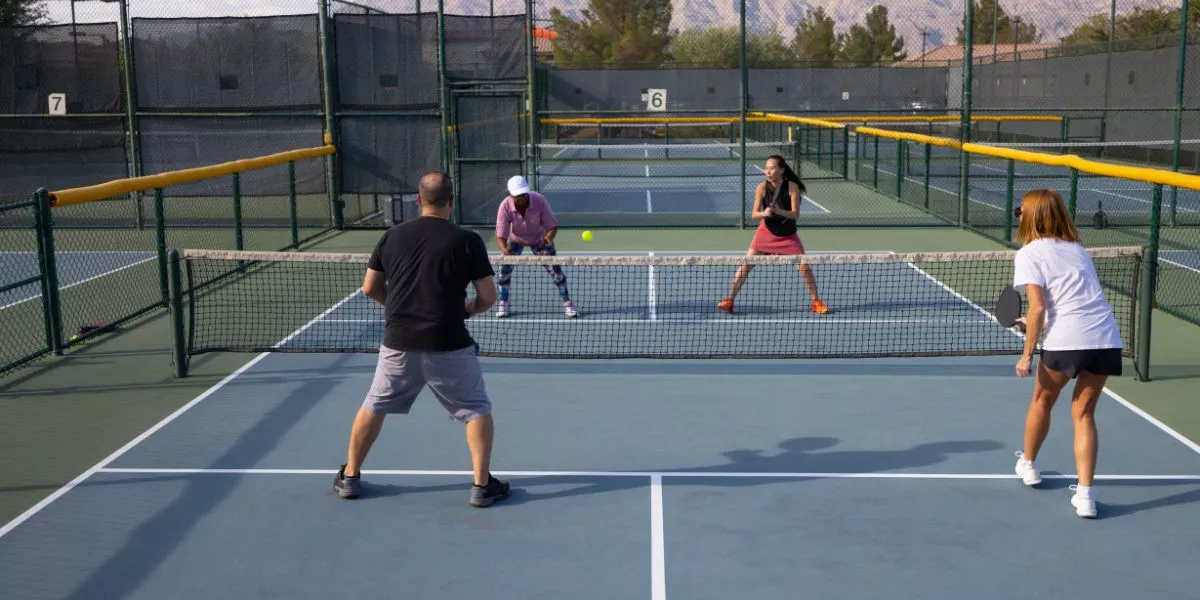
When considering the disparities between indoor and outdoor pickleball equipment, it's essential to acknowledge the nuanced adjustments necessary for each setting. The distinct characteristics of indoor versus outdoor balls and paddles can significantly influence your gameplay. However, there's more to this discussion than just the equipment itself. The impact of court surface variations and environmental factors on your performance adds another layer of complexity to the game. Understanding these differences is key to mastering the sport in diverse playing conditions.
Ball Differences
When playing pickleball indoors, opt for a softer ball to minimize noise and prevent damage to the flooring. Indoor pickleball balls are specifically designed to be quieter and gentler on indoor surfaces compared to outdoor balls. The softer material used in indoor balls reduces the impact noise, making it more suitable for indoor play where sound control is crucial. These balls are engineered to provide a good bounce while maintaining a lower level of noise, allowing you to enjoy your game without disturbing others.
Using an indoor pickleball ball ensures that your playing surface remains in good condition. The softer composition of indoor balls helps prevent scuff marks and damage to indoor flooring, such as wooden gym floors or gym mats. By choosing the right ball for your indoor games, you not only protect the playing surface but also contribute to a more pleasant playing environment for everyone involved.
Paddle Variances
Selecting the appropriate paddle for your pickleball game can significantly impact your performance and overall gameplay experience. Paddle variances play a crucial role in determining the power, control, and feel of your shots on the court. When choosing a paddle, consider factors such as weight, grip size, material, and shape.
Paddle weight is a key consideration. Lighter paddles are easier to maneuver and provide quicker reactions, ideal for players who prioritize speed and agility. On the other hand, heavier paddles offer more power and stability, benefiting players who prefer strong, consistent shots.
Grip size is another important aspect to assess. A comfortable grip ensures better control and minimizes the risk of wrist strain during extended play sessions. Finding the right balance between a grip that's too small or too large can enhance your overall performance.
Additionally, paddle materials vary, with options like wood, composite, and graphite. Each material offers distinct characteristics in terms of power, control, and spin potential. Experimenting with different paddle materials can help you determine which suits your gameplay style best.
Court Surface Varied
Court surfaces vary in pickleball, impacting gameplay dynamics and strategies. Indoor pickleball courts typically have smooth, hard surfaces made of wood, composite materials, or cushioned tiles. These surfaces provide consistent ball bounce and speed, allowing for precise shots and quick movements.
On the other hand, outdoor pickleball courts are usually made of asphalt, concrete, or acrylic surfaces. These outdoor courts can vary in texture and speed, affecting how the ball bounces and moves during play. Asphalt surfaces are common in outdoor settings and tend to be faster, making the game more challenging as players need to adjust their timing and footwork.
Concrete surfaces, while durable, may offer a slower pace and require players to put more effort into generating power. Acrylic surfaces provide a middle ground, offering a good balance of speed and control. Understanding the differences in court surfaces can help you adapt your gameplay and strategies to excel in both indoor and outdoor pickleball environments.
Impact on Gameplay
Considering the equipment used can significantly influence the gameplay dynamics in pickleball. The type of ball, paddle, and even court surface can all impact how the game unfolds.
When playing indoors, the smoother surface and consistent bounce of an indoor ball can lead to quicker rallies and more precise shots. The indoor paddles are often lighter and provide more control, allowing for strategic plays and quick reactions.
Conversely, outdoor pickleball equipment is designed to withstand elements like wind and sun. Outdoor balls have larger holes, making them slower and more resistant to wind interference. Outdoor paddles are sturdier and heavier, providing more power for shots. The rougher outdoor court surface may slow down the game slightly but adds an element of challenge.




